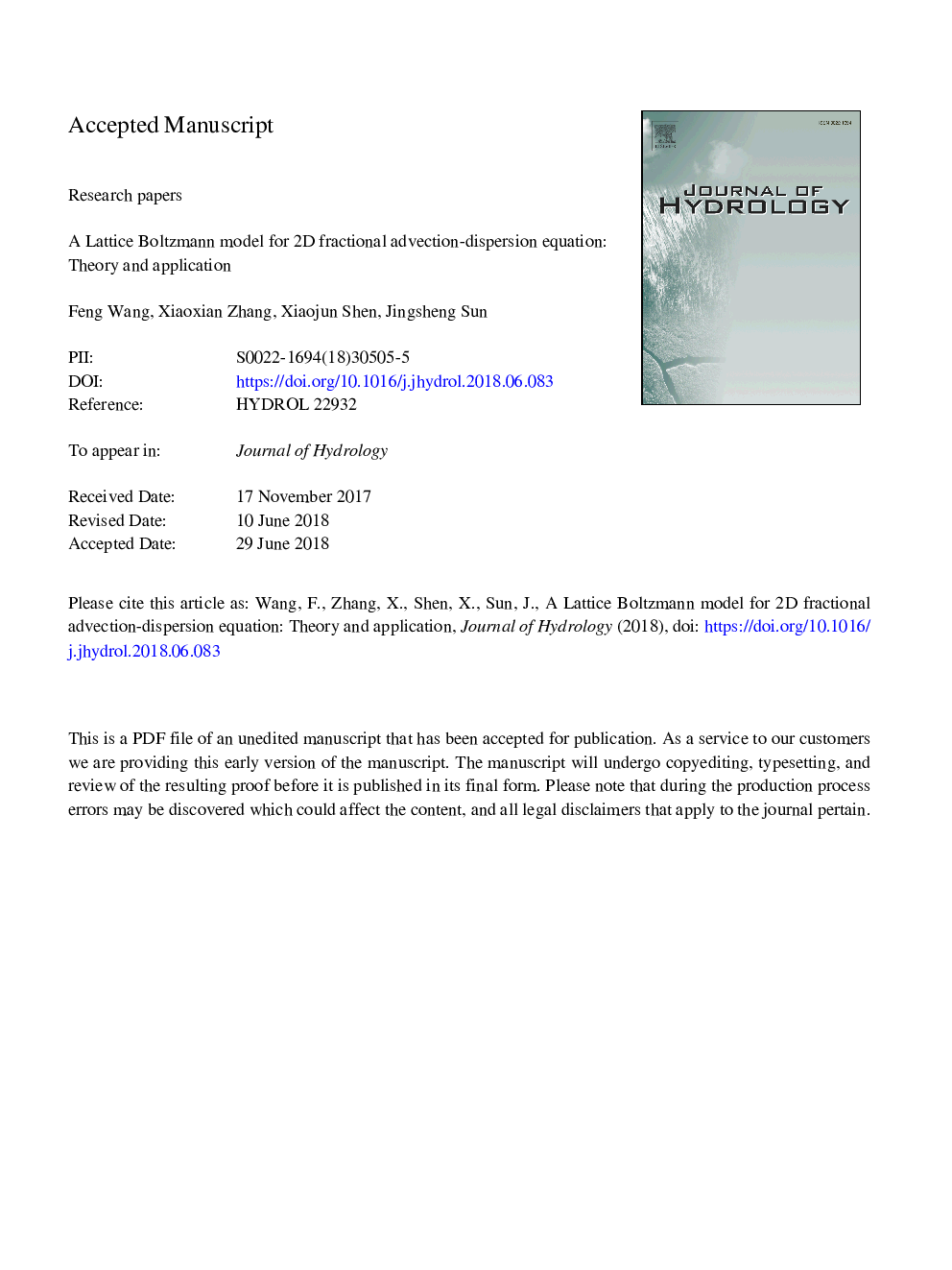| کد مقاله | کد نشریه | سال انتشار | مقاله انگلیسی | نسخه تمام متن |
|---|---|---|---|---|
| 8894469 | 1629890 | 2018 | 28 صفحه PDF | دانلود رایگان |
عنوان انگلیسی مقاله ISI
A Lattice Boltzmann model for 2D fractional advection-dispersion equation: Theory and application
دانلود مقاله + سفارش ترجمه
دانلود مقاله ISI انگلیسی
رایگان برای ایرانیان
کلمات کلیدی
موضوعات مرتبط
مهندسی و علوم پایه
علوم زمین و سیارات
فرآیندهای سطح زمین
پیش نمایش صفحه اول مقاله

چکیده انگلیسی
Natural soils and aquifers are inherently heterogenous and chemical transport through them is anomalous characterized by an early arrival followed by a persistent tail. How to describe such anomalous phenomena has been an interest and, as a result, a number of approaches have been proposed over the past few decades. Among others, the fractional advection-dispersion equation (FADE) is a model able to describe anomalous transport when the dispersion is regional rather than local as presumed in the classical advection-dispersion equation. Practical application of FADE needs numerical solutions, which is challenging because its spatial discretization gives rise to a full coefficient matrix. In this paper, we propose a Lattice Boltzmann model to solve the two-dimensional FADE. Given that the anomalous dispersion in soils and aquifers is hydrodynamic and caused by spatial variation in water velocity across the pore space and that the chemical plume spreads preferentially along the mean water-flow direction, the dispersion coefficient and the order of the fractional derivative should be both anisotropic. The anisotropies are solved by the two-relaxation time Lattice Boltzmann model using different relaxation parameters in different directions. Compared with existing numerical methods for the FADE, the proposed model has advantages that it is explicit, second-order accurate in both time and space, mass-conservative, and free of numerical dispersion; its stability is independent of dispersion coefficient. We verify the model against the analytical solution of a benchmark problem and then apply it to simulate Clâ movement in a tracer experiment conducted on an up-catchment hillslope. The results show that the FADE with backward skewness can reproduce the breakthrough curves measured from the experiment.
ناشر
Database: Elsevier - ScienceDirect (ساینس دایرکت)
Journal: Journal of Hydrology - Volume 564, September 2018, Pages 246-255
Journal: Journal of Hydrology - Volume 564, September 2018, Pages 246-255
نویسندگان
Feng Wang, Xiaoxian Zhang, Xiaojun Shen, Jingsheng Sun,